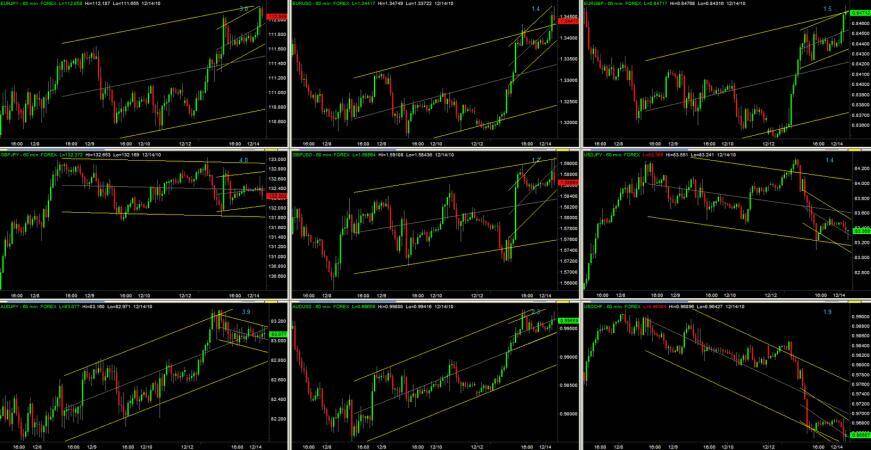
Head-to-head: Technical Analysis vs. Fundamental Analysis in Trading

Fundamental analysis and technical analysis are two of the main approaches when analyzing the soundest investment in the financial market. Investors and analysts usually resort to one of the two methods mentioned above when they consider investing in an asset class available in the market.
Both these approaches have their fair share of advantages and salient points as well as shortcomings and limitations as viewpoints in studying an investment. Read on to illuminate your trading approach perspective.
Definition and Foundation of the Approach
Technical Analysis
The technical analysis way of determining the soundness of investment is through predicting a future figure in consideration of the available past movements of figures in the market. When using this approach, the price data is the primary source of information and reference point for future numbers. The technical nature of this analytical study is reflected in the way analysts rely on the history of numbers and use them to predict future price movements.
The usefulness of this approach can be applied to an array of asset classes such as individual stocks, futures, currencies, and stock indices.
The technical analysis approach is founded on the following principles:
- Price discounts everything
- Price moves in observable trends
- History tends to repeat itself
Fundamental Analysis
Current economic conditions are the core focus of the fundamental approach to determine the underlying value of a particular security. Requirements of the economy are identified after taking in crucial economic figures, including the GDP rate, inflation rate, interest rates, and others.
Interest rate cuts and other financial activities of surrounding central banks in the market are religiously monitored by analysts utilizing this approach. Analysts study the economic conditions to figure out undervalued and overvalued prices out in the market which traders can capitalize on.
This analysis zeroes in on finding the reason that drives the market to its current conditions to justify the prediction based on the ideas extracted from the study.
Upsides of the Approach
Fundamental Analysis
Gives an accurate explanation of Price Movements – price movements in the market are derived from current developments and financial news coming from newsmakers in the financial sector.
Reflects global market outlook – major economies are taken into consideration most of the time to reveal the global economic conditions
Value Validation – one of the aims of this approach is to validate the current price of an asset. If the asset is not riced according to underlying tenets, it is either overvalued or undervalued.
Long-Term Trend Scope – traders gain insightful information from this approach as it provides a long-term view of a particular asset or currency pair.
Technical Analysis
Timeframe-Flexibility – short-term, intermediate-term, and long-term traders can rely on the technical aspect of analyzing the market.
Coveys the market mood – using this form of analysis gives traders ideas about future demand and supply trends to help them situate their trading choice on the more suitable side.
Identifies the perfect timing in trading – traders profit when they execute trading choices during high time. This approach gives traders signals of when to enter and exit trade positions.
Programmable concepts – algorithmic trading systems can be developed out of ideas from this analysis. Once available, it will aid traders in executing a rule-based order in the market to ease their trading.
Downsides of the Approach
Technical Analysis
Gives inaccurate signals – technical tools tend to provide conflicting signals during trading.
Over-analysis – traders tend to overanalyze the market that sometimes leads to indecisiveness.
Bias-prone – playing favorites on specific currency pairs might give a wrong analysis and miss significant signals when trading.
Fundamental Analysis
Too much data – since the fundamental approach considers the broader aspects of analyzing, analysts are plagued with too many figures to consider and might lead to confusion.
It does not support Short-term position – despite the regular news feeds in the market regarding economic situations and developments, traders taking a little place cannot heavily rely on feeds as it leaves many other aspects of the study that are impactful to the results.
Market-timing insensitive – if traders look for particular signals of when to enter and exit trade positions, this approach does not provide them with pertinent signals as it focuses on the broader scope of analyzing the market.
Conclusion
With the given sets of benefits and shortcomings the two approaches operate with, it is best to say that a combination of both analyses is the best approach to analyzing an asset.
While the technical approach of analysis seems to have more advantages that can lead to yielding more probable results, the fundamental analysis can complement the former and fill in the gaps that it doesn’t account for to complete the multi-faceted ways of analyzing assets.
